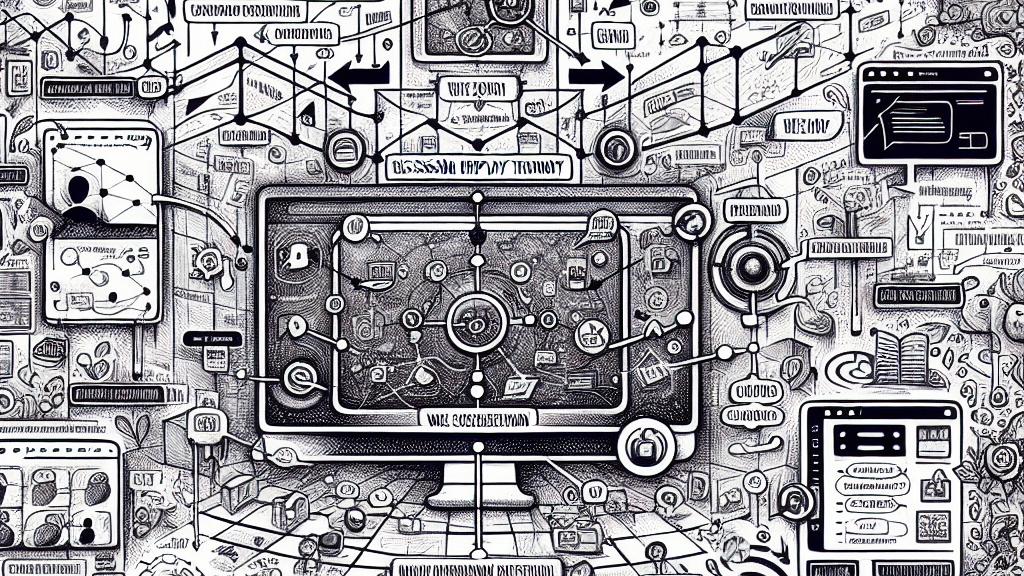Capture It All: The Art of Web-Based Screen Recording!
Overview
- Comprehensive examination of session replay technology and its pivotal role in enhancing user experience.
- In-depth comparison between developing custom in-house screen recording solutions versus utilizing popular SaaS options.
- Exploration of technical challenges, best practices, and innovative trends in implementing effective web-based recording systems.

What is Session Replay?
Session replay technology is a revolutionary tool that empowers businesses to meticulously capture and analyze user interactions within web applications. This advanced method allows for the recording of comprehensive user behavior, including mouse movements, clicks, scrolls, and keyboard inputs, generating a detailed playback of the user's journey through an interface. As Yuku Kotani articulated in his insightful presentation, session replay not only sheds light on user preferences but also uncovers usability issues that could severely hinder customer satisfaction and retention. By observing how real users navigate products, teams can identify areas of confusion, highlight functionality that requires improvement, and eliminate obstacles that prevent users from completing their desired tasks. For example, if a user hovers a cursor over a non-clickable element repeatedly, it signals a design flaw that requires immediate attention, ultimately driving informed design decisions that enhance overall user experience.
In-House Solutions vs. SaaS Tools
When contemplating the integration of session replay functionality, organizations must strategically decide between developing bespoke solutions or adopting established Software as a Service (SaaS) options, such as Loom. Crafting an in-house system has its distinct advantages, offering unparalleled control over customization and the ability to fully own user data, allowing organizations to tailor features that align precisely with business needs and objectives. However, this approach often demands significant investment in development resources and long-term maintenance, which could divert attention from other critical functions. Conversely, SaaS platforms provide a rapid deployment of necessary functionalities, allowing businesses to access powerful screen recording capabilities with minimal technical overhead. Yet, organizations must tread carefully, as reliance on these services implies data managed by third parties, which raises concerns regarding both data privacy and compliance with regulations. Hence, striking an optimal balance between control, cost, privacy, and ease of use is essential for achieving the desired outcomes.
The Technical Aspects of Screen Recording
Creating an effective web-based screen recording system involves navigating a myriad of technical challenges that require innovative coding and architectural solutions. Developers often rely on various JavaScript APIs and methodologies, such as the cloning of the Document Object Model (DOM) and leveraging MutationObserver for real-time tracking of changes to accurately reflect user interactions. As Kotani articulated, the ability to efficiently capture and manage a user’s session entails overcoming challenges related to asynchronous behaviors while ensuring seamless playback without compromising performance. Moreover, protecting user privacy must be a top priority, necessitating robust anonymization techniques to fully comply with regulations while also developing a trusting relationship with users. By employing event timestamps and unique identifiers for recorded interactions, developers can ensure a high-quality playback experience that mirrors the original user actions faithfully. This methodical and meticulous approach guarantees that the end-user receives a rich and engaging experience representative of their true journey through the application.
Benefits & Use Cases of Session Replay
The multitude of advantages presented by session replay technology extends far beyond improving user experience; it significantly impacts various sectors within a business. Not only does this technology inform product design, but it is also a critical asset for customer support and agile product management. Support personnel can leverage replay insights to directly address user-specific issues or frustrations, thus providing prompt and effective solutions that enhance overall customer satisfaction. Simultaneously, product managers can utilize data gleaned from replays to guide iterative feature enhancements, ensuring that product roadmaps are closely aligned with genuine user requirements. Furthermore, session replays act as persuasive evidence for advocating product updates or strategic enhancements to stakeholders, effectively presenting visual data that complements quantitative analytics. This synergistic blend of qualitative and quantitative insights equips businesses with the tools necessary to continuously refine user engagement strategies, thereby elevating overall product effectiveness and encouraging long-term loyalty from users.
Future Trends and Considerations
As the technology landscape continues to evolve, so too does the field of session replay and web-based screen recording. Emerging trends indicate a shift toward more automated and AI-driven analysis tools that can distill actionable insights from recorded sessions, ultimately enhancing operational efficiency. This evolution is poised to revolutionize the speed at which organizations can interpret user interactions and adjust strategies accordingly. Additionally, with growing concerns surrounding data privacy and security, organizations will be compelled to enforce stringent policies regarding user data usage and consent in order to uphold ethical standards. As privacy regulations become more commonplace, such as the GDPR and CCPA, businesses will need to seamlessly integrate session replay technology into their compliance frameworks. By staying at the forefront of these trends and continually focusing on user-centric design principles, companies can harness the full power of session replay to cultivate a more engaging and satisfying digital experience that resonates with their audiences.

Loading...